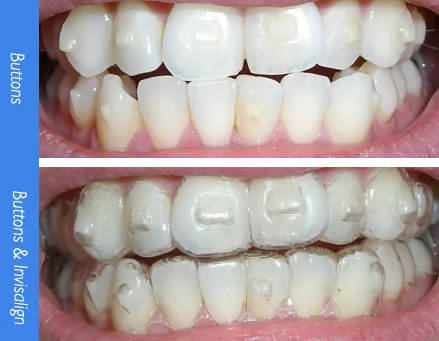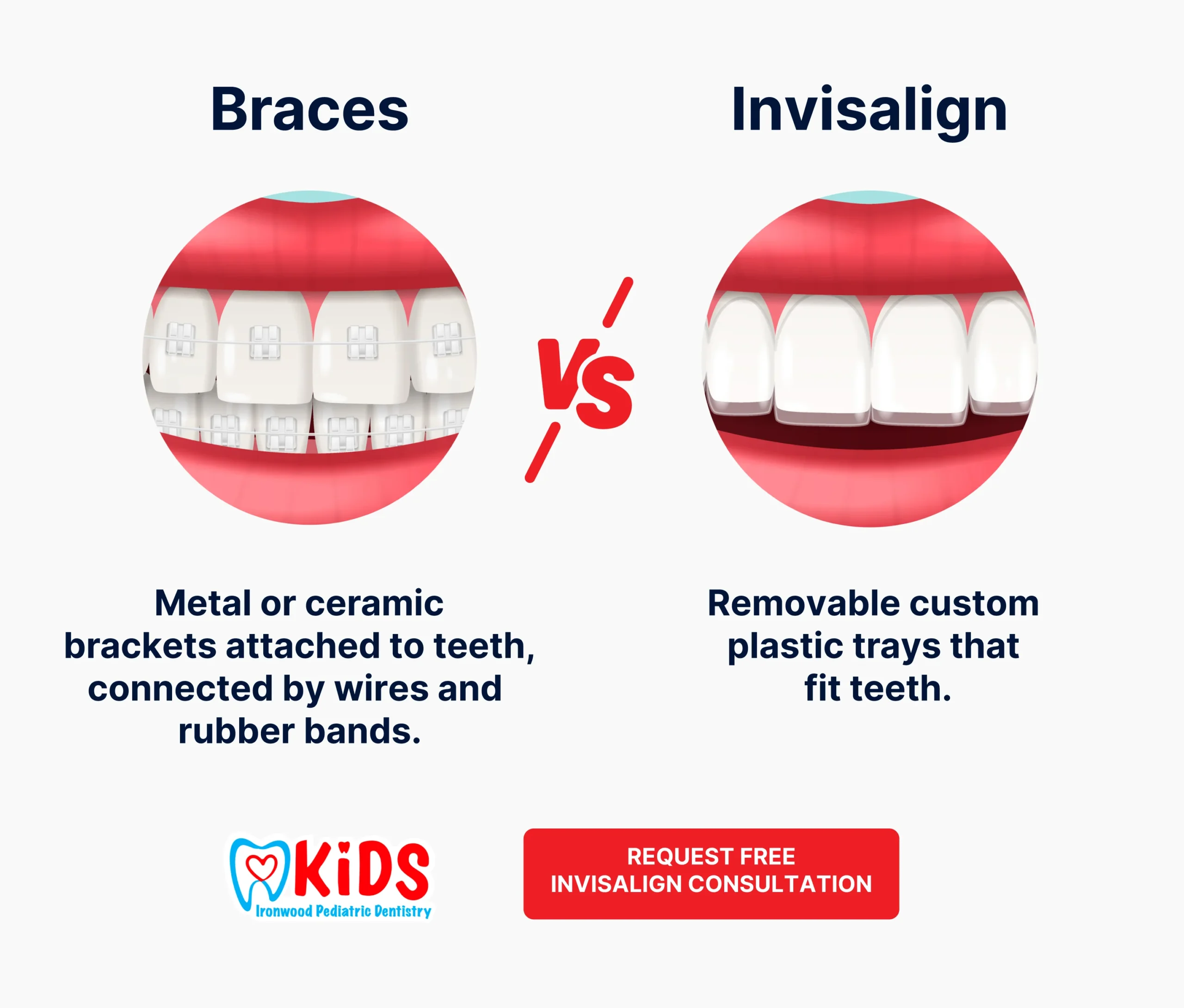What to Expect During Your Invisalign Journey: A Comprehensive Introduction
What to Expect During Your Invisalign Journey: A Comprehensive Introduction
Blog Article
Invisalign vs. Typical Dental braces: Which Alternative Is Right for You?
When considering orthodontic treatment, the option in between Invisalign and traditional dental braces presents several vital factors that merit mindful evaluation. Invisalign provides a discreet choice with detachable aligners, while traditional dental braces offer a much more visible yet efficient service for extreme misalignment.
Introduction of Treatment Choices

On the other hand, conventional braces consist of metal brackets and cables that are adhered to the teeth. This technique uses continual pressure with time to attain alignment. While efficient for intricate orthodontic problems, typical dental braces require regular visits for modifications and can present obstacles in maintaining oral hygiene because of the trouble of cleansing about brackets and cords.
Both options have their qualities, and the selection usually rests on particular dental conditions, lifestyle preferences, and person conformity. Inevitably, seeking advice from an orthodontic specialist is important for establishing one of the most appropriate treatment strategy customized to specific requirements. Recognizing the subtleties of each alternative can considerably affect the total success of orthodontic treatment.
Visual Considerations
A substantial aspect influencing the selection between Invisalign and conventional dental braces is the aesthetic allure each treatment supplies. Invisalign aligners are crafted from clear plastic, making them practically invisible when used.
In contrast, standard braces include metal braces and wires, which can be extra visible. While innovations in orthodontic modern technology have actually led to the development of smaller braces and tinted elastics, typical braces still preserve an even more obvious account. For some people, the exposure of dental braces might deter them from seeking necessary therapy.
Ultimately, the choice between Invisalign and standard dental braces might hinge on personal preferences regarding appearances. People who focus on discernment typically favor Invisalign, while those who are less concerned regarding exposure might choose typical braces. Recognizing the aesthetic ramifications of each option is critical for making an educated decision that lines up with one's lifestyle and choices.
Convenience and Convenience

In terms of benefit, Invisalign aligners are detachable, making it possible for people to appreciate their favorite foods without restriction and maintain optimal dental health. Brushing and flossing are simplified, as the aligners can be taken out during these regimens, whereas typical dental braces need cautious navigating around cables and brackets.
In addition, Invisalign's modern system permits for less orthodontic gos to. Clients normally obtain several sets of aligners at once, which can streamline the treatment procedure and decrease time spent in the orthodontist's chair. In comparison, traditional dental braces necessitate normal changes, making them less hassle-free for those with active routines. Invisalign. Overall, the comfort and ease of Invisalign make it an enticing selection for lots of individuals seeking orthodontic treatment.
Treatment Period and Efficiency
While both Invisalign and conventional braces are efficient in remedying dental imbalances, the period of treatment can differ considerably between the 2 choices. Commonly, Invisalign treatment can take anywhere from 12 to 18 months, depending upon the complexity of the instance. The clear aligners work by progressively changing teeth into their desired settings, and routine follow-ups with an orthodontist help guarantee development stays on track.
In comparison, typical braces usually call for a longer dedication, typically ranging from 18 months to three years. This is because of their set nature and the use of braces and cables, which can be a lot more reliable for complicated cases and serious misalignments (Invisalign). The treatment performance find more information of conventional braces is well-documented, as they enable for exact modifications and greater control over tooth activity
Ultimately, the choice between Invisalign and traditional braces might depend upon both the expected therapy period and the details oral problems available. Consulting with an orthodontist is important, as they can supply tailored suggestions based on specific demands, making certain the picked technique lines up with preferred outcomes and timeframes.
Expense Comparison and Insurance Policy Alternatives
Price plays a considerable role in the decision-making procedure for individuals taking into consideration orthodontic therapy, whether choosing Invisalign or traditional dental braces. Usually, the cost of Invisalign ranges from $3,000 to $8,000, while traditional dental braces generally set you back in between $2,000 and $6,000. Elements affecting these costs consist of the intricacy of the situation, the period of treatment, and geographical area.
Insurance policy coverage can significantly influence out-of-pocket costs. Many oral insurance coverage plans supply partial coverage for orthodontic therapies, but the specifics can differ widely. It is critical for individuals to review their insurance coverage to figure out the extent of protection for either choice. Usually, standard dental braces may be a lot more often covered by insurance strategies compared to Invisalign, which some insurance companies classify as a cosmetic treatment.
Furthermore, a number of orthodontic techniques supply flexible repayment strategies, making both treatment options much more obtainable. Individuals need visit their website to ask about possible funding choices and price cuts for in advance payments. Evaluating the total price, including insurance advantages and settlement strategies, is crucial for making an educated choice that lines up with both aesthetic choices and budget factors to consider.

Final Thought
In summary, the selection in between Invisalign and standard dental braces depends upon More Help multiple aspects, including aesthetic preferences, convenience, therapy duration, and price. Invisalign provides a very discreet, removable choice that promotes oral health and dietary versatility, while conventional dental braces may be more ideal for complicated oral issues and usually come at a reduced price point. Eventually, appointment with an orthodontist is vital to analyze individual conditions and determine the most proper therapy choice for achieving optimal oral placement.
When considering orthodontic treatment, the option in between Invisalign and conventional dental braces presents several crucial factors that warrant mindful assessment.Comparing Invisalign and conventional dental braces reveals distinct treatment alternatives for orthodontic adjustment.While both Invisalign and standard braces are effective in fixing dental imbalances, the period of treatment can vary dramatically between the two alternatives.Price plays a considerable role in the decision-making procedure for people considering orthodontic therapy, whether choosing for Invisalign or standard dental braces.In recap, the choice between Invisalign and conventional dental braces pivots on several elements, consisting of visual choices, convenience, therapy period, and cost.
Report this page